Lancaster and Morecambe Bay
This is an area of the country that my wife and I have much enjoyed visiting. The Lake District is not far away but it was Morecambe Bay and its towns and villages that fascinated us. Lancaster is close to the M6 and we often used the hotels near the motorway junction as a base for exploration.
This page shows our photos on Lancaster,Glasson Dock, Morecambe, Grange-over-Sands, Cartmel, Lakeside and Barrow-in-Furness
Lancaster
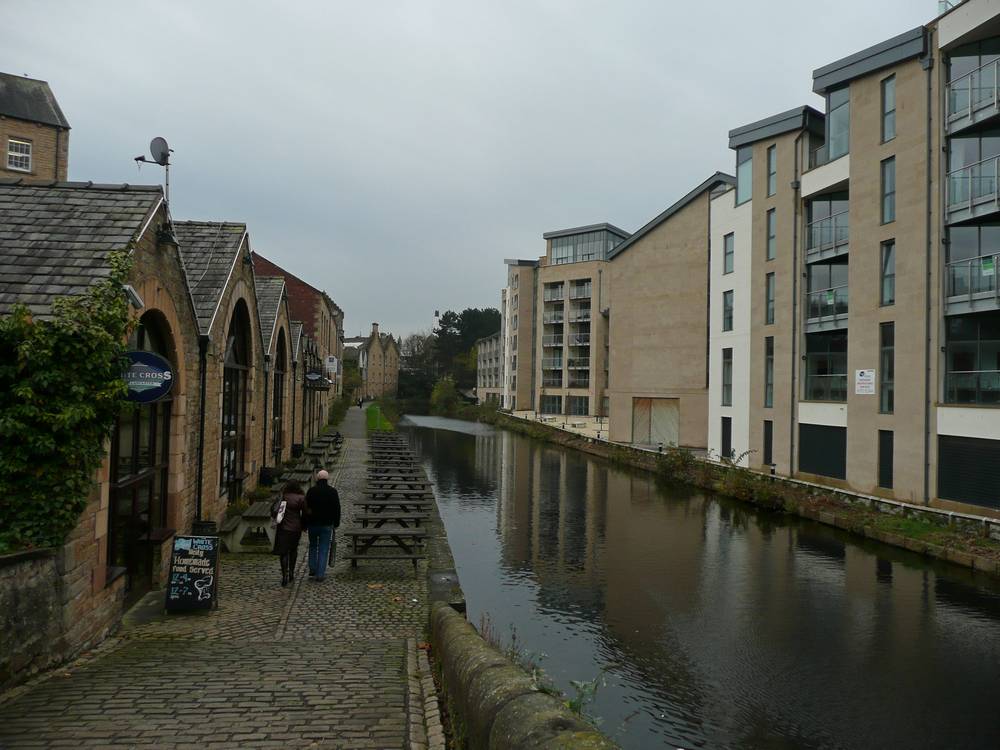
Lancaster Canal from Quarry Road. 6th November 2009.
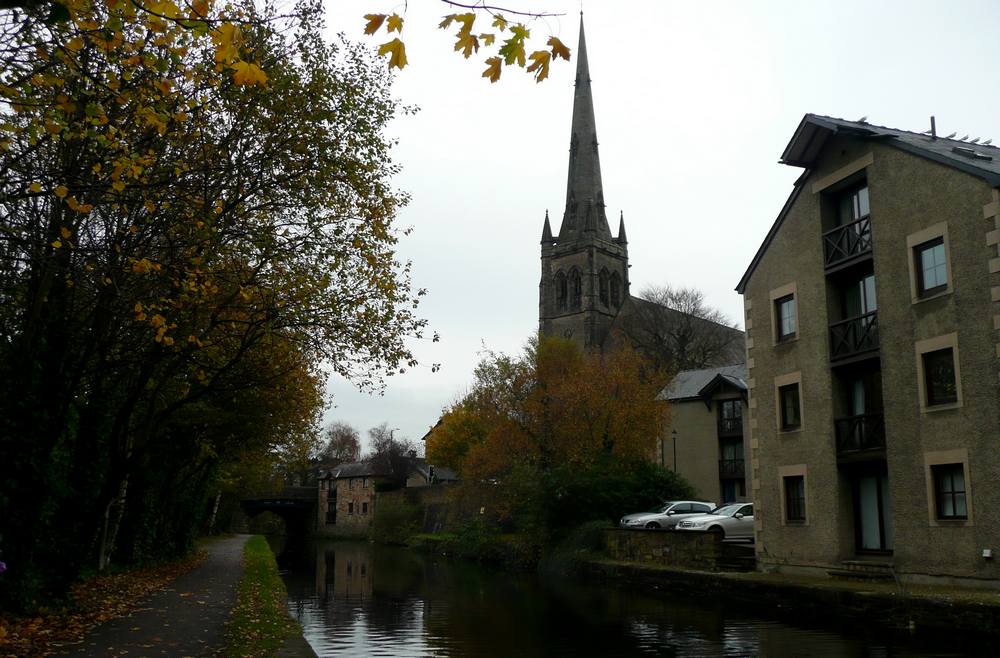
Lancaster Canal with Lancaster Cathedral. 6th November 2009.
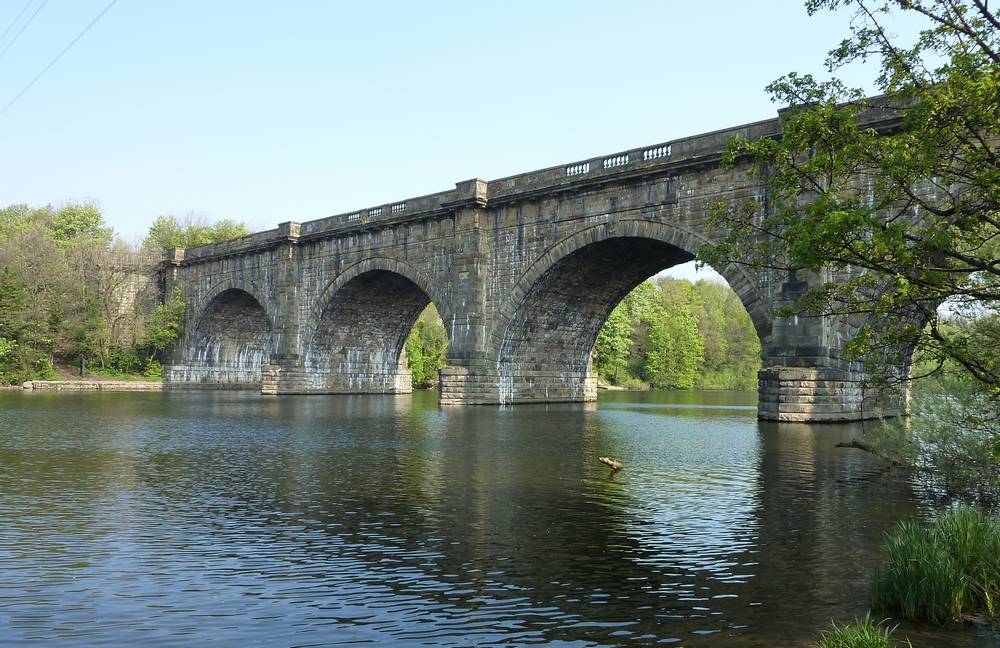
Aqueduct taking Lancaster Canal over the river Lune. Date of photo: 22nd April 2011.
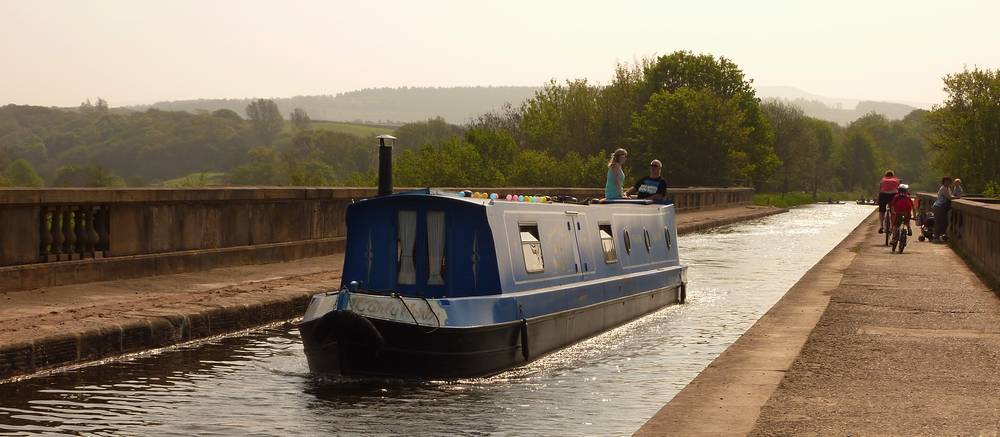
Narrow boat on the Lune Aqueduct. Date of photo: 22nd April 2011.
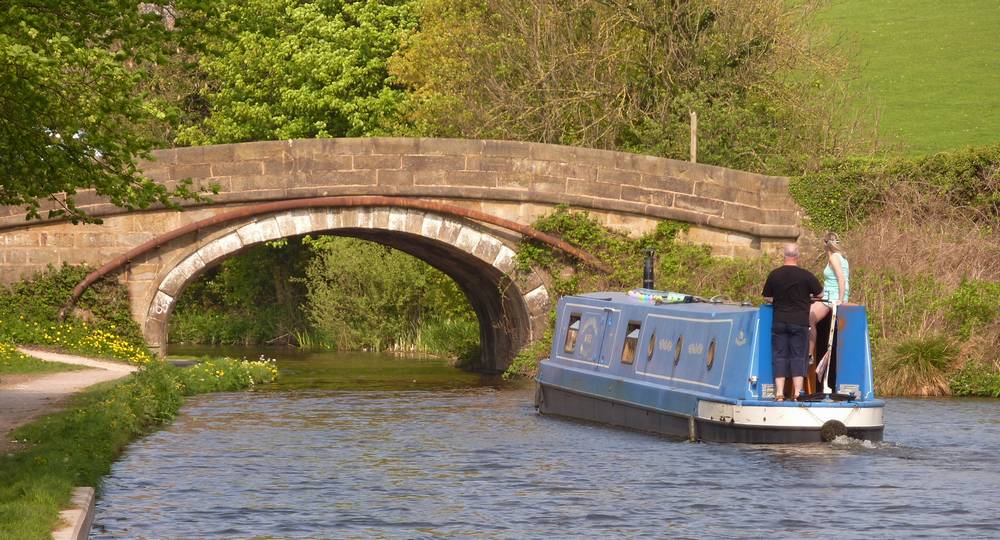
Narrow boat after crossing the Lune Aqueduct going under the bridge at Halton Road. Date of photo: 22nd April 2011..
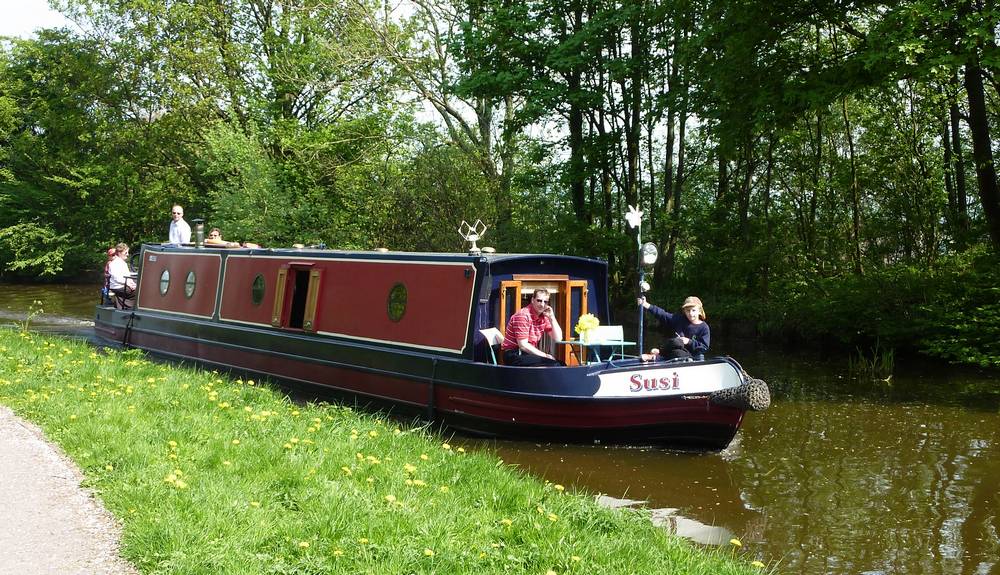
Narrow boat 'Susi' on the Lancaster Canal near the Lune Aqueduct. Date of photo: 22nd April 2011.
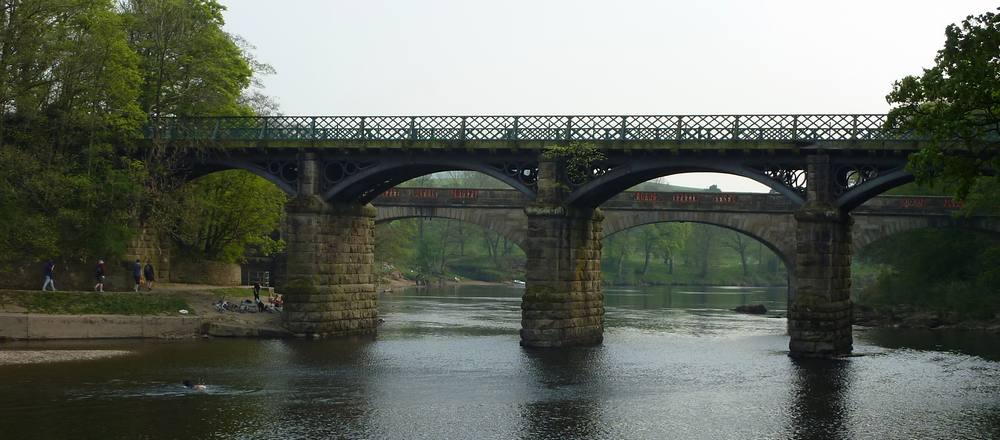
Bridges at Crook O' Lune, a popular local beauty spot. Date of photo: 22nd April 2011.
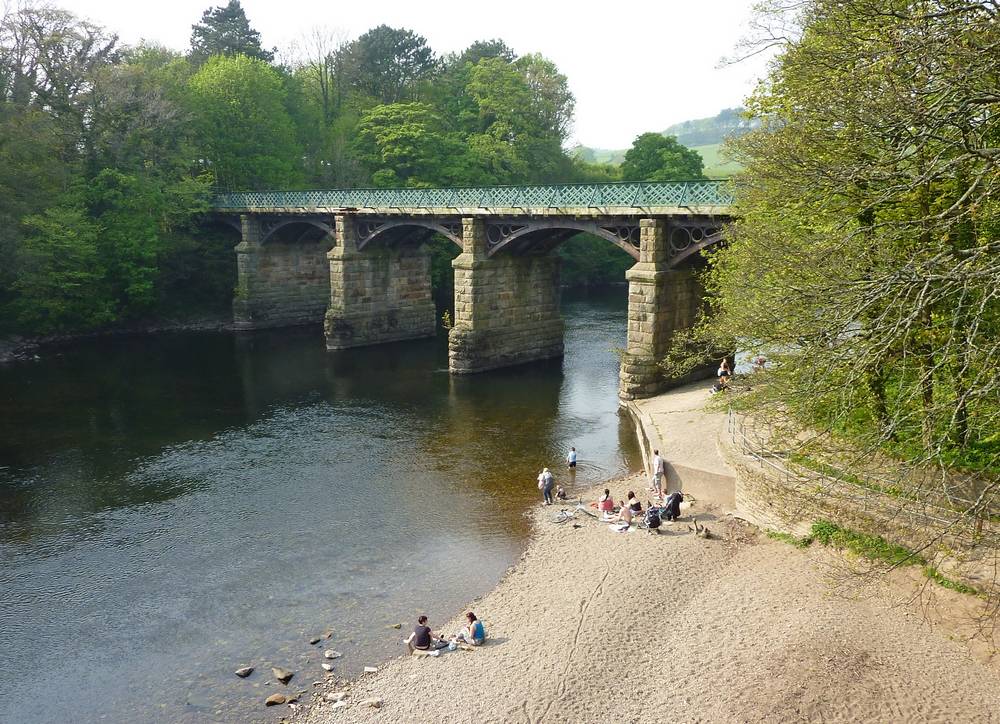
Bridge at Crook O' Lune. Date of photo: 22nd April 2011
Glasson Dock
Glasson Dock is near the mouth of the Lune. In 1779, the Lancaster port commission decided to build a dock at Glasson because of the difficulties of navigating up the River Lune to the port at Lancaster. The quay is connected to the Lancaster Canal by the Glasson branch and by a rail line to Lancaster until 1964.
Just two photos as it was a miserable rainy day when we went.
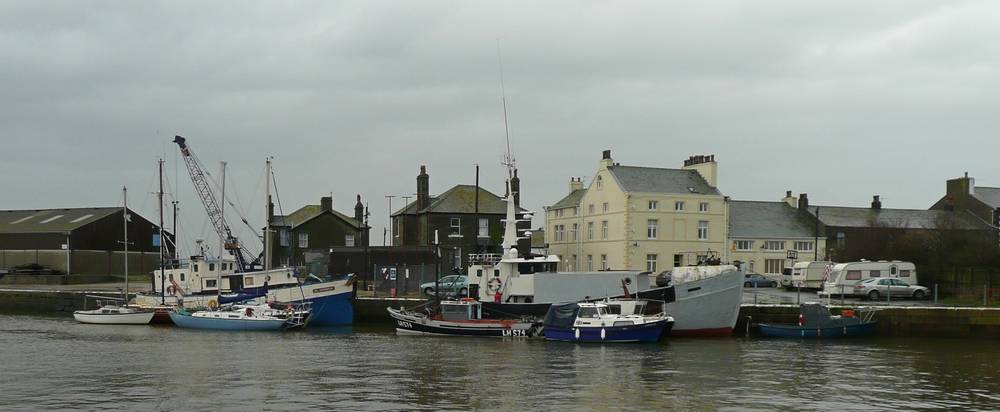
Glasson Dock. Date of photo: 7th November 2009
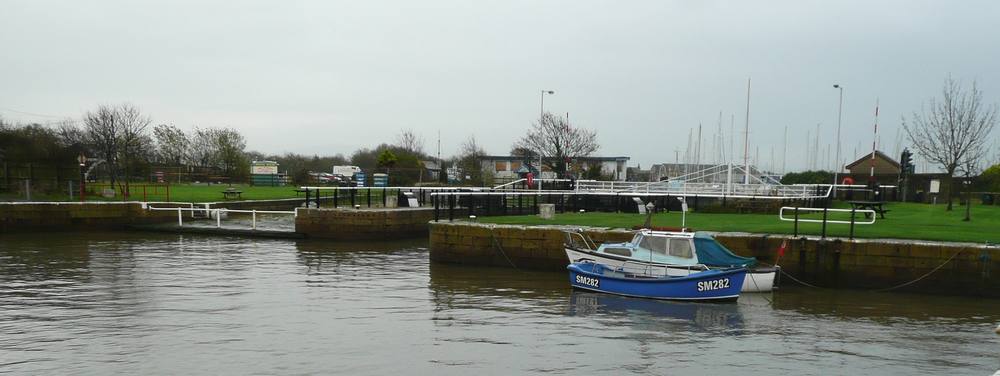
Glasson Dock; swing bridge giving access to marina and Lancaster Canal. Date of photo: 7th November 2009
Morecambe
Morecambe became a popular seaside resort on the West Coast in the mid-20th century, alongside others like Blackpool and Southport. However,its popularity declined after loss of its two piers following damage and the failure of other attractions.
Today Morecambe has some attractions which make it a good destination to explore. Some of the buildings are magnificent as the photos show. The seafront promenade and gardens have been rebuilt and are attractive.
For me, the big attraction is the statue of Eric Morecambe, half of the much-loved comedy double-act, Morecambe and Wise. His real name was John Eric Bartholomew and he adopted the surname Morecambe for a stage name from his home town. His statue, created by sculptor Graham Ibbeson, was unveiled by the Queen in 1999.
The statue is very popular. Although bronze and inanimate, the effect it has on people is quite amazing. I know my own reaction to it and I know my wife's (see photo), but I sat on a seat nearby and watched other people's reactions. Some smiled but others laughed, sang, danced and played the fool. Everyone went away looking happy. I have never seen a statue that has that effect on people before.
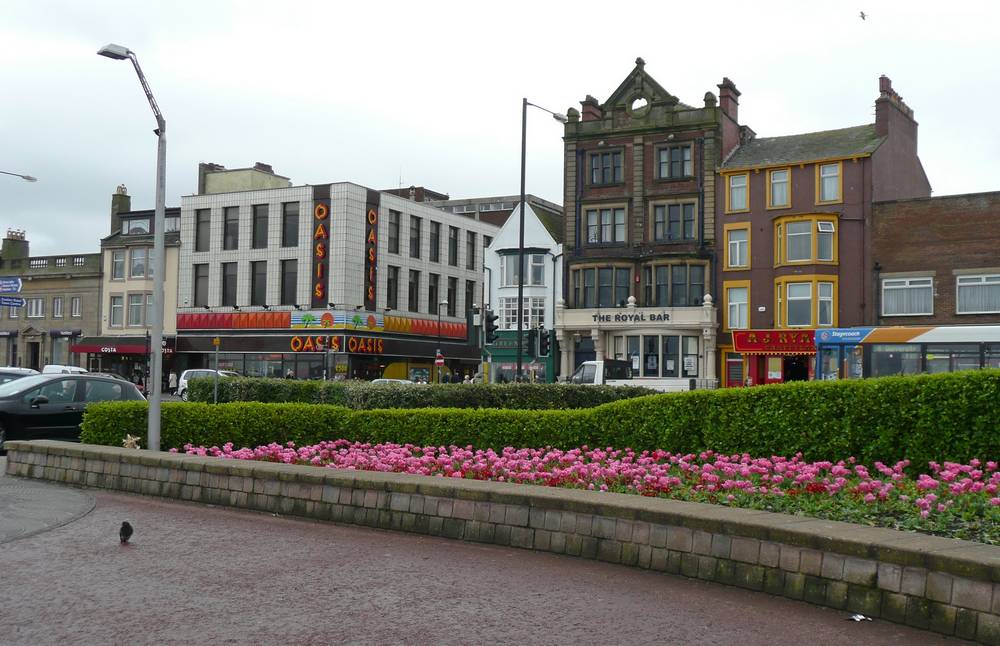
Morecambe from the promenade. 27th April 2009.
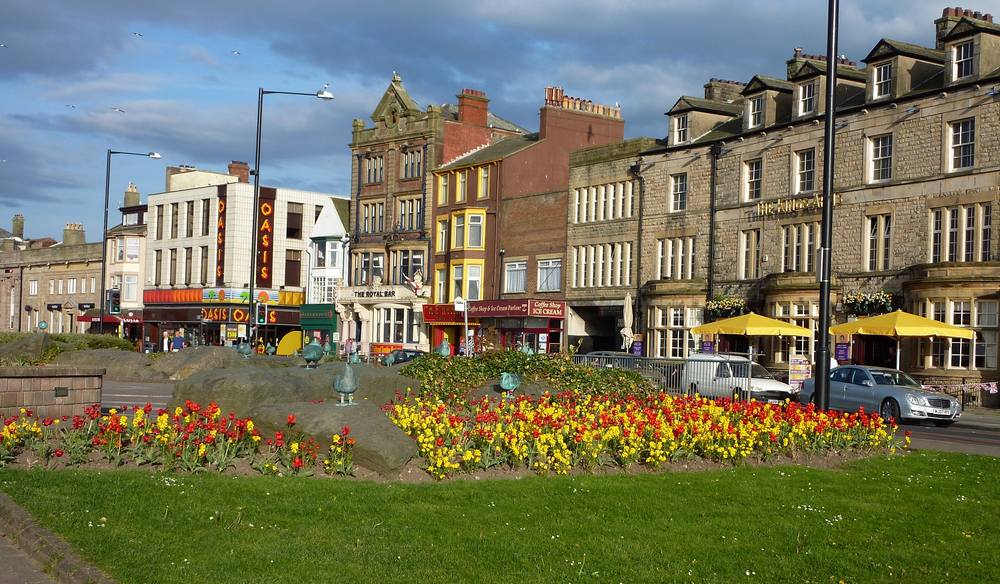
Morecambe from the promenade. 25th April 2011.
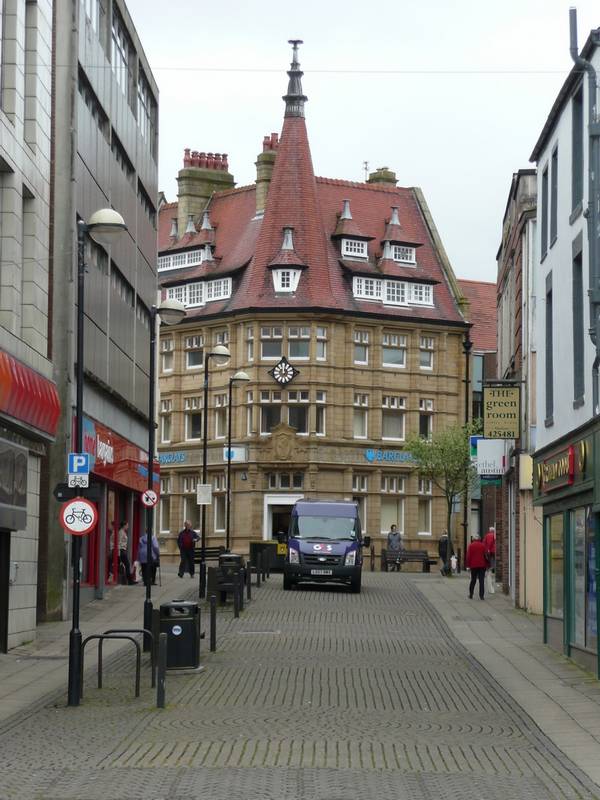
Barclays Bank Building, Euston Road, Morecambe.This building, in Bavarian style, is a grade II listed building. Date of photo: 27th April 2009.
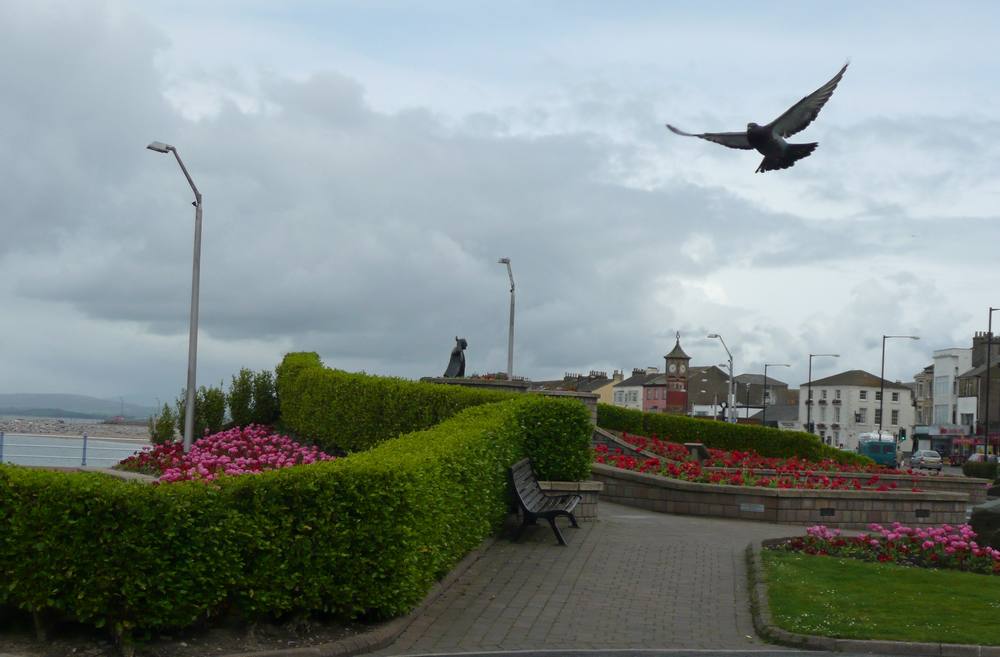
Morecambe seafront gardens. In the background are the Clock Tower and the statue of Eric Morecambe. 27th April 2009.
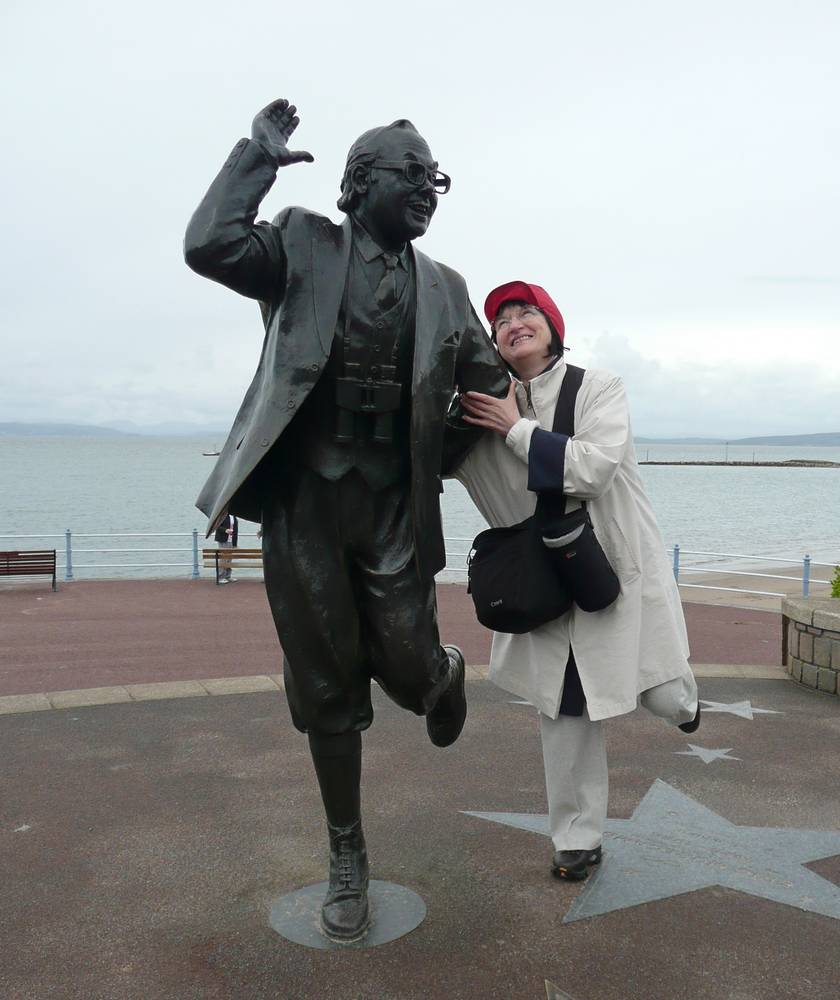
Statue of Eric Morecambe on the seafront (with Rozsa Halls). 27th April 2009.
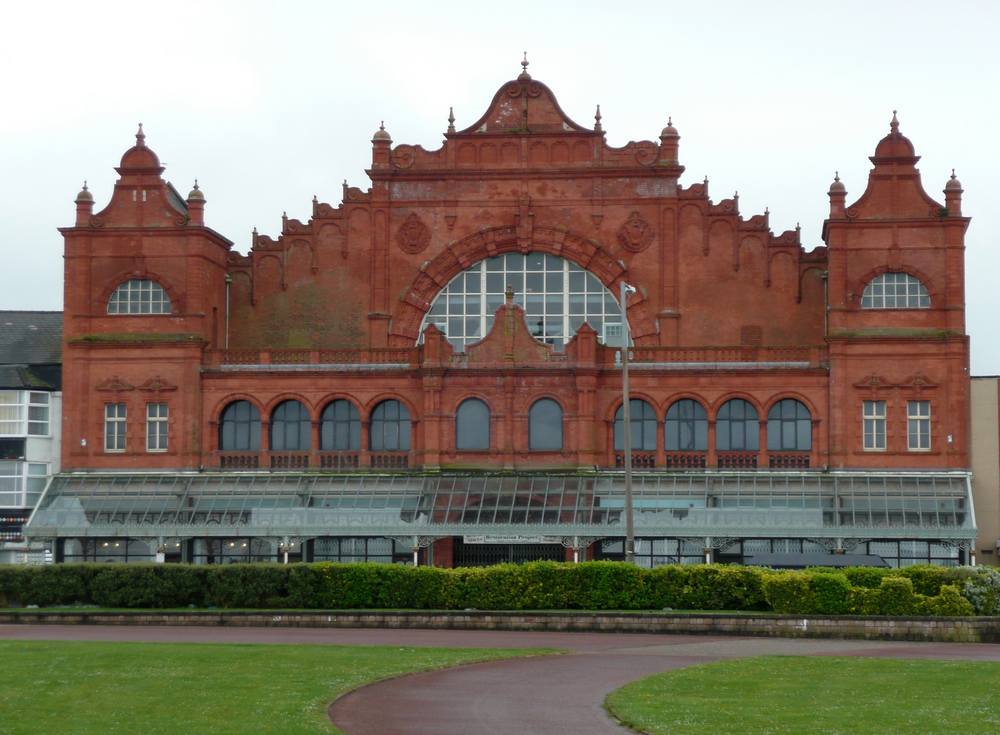
Morecambe Winter Gardens. 27th April 2009.
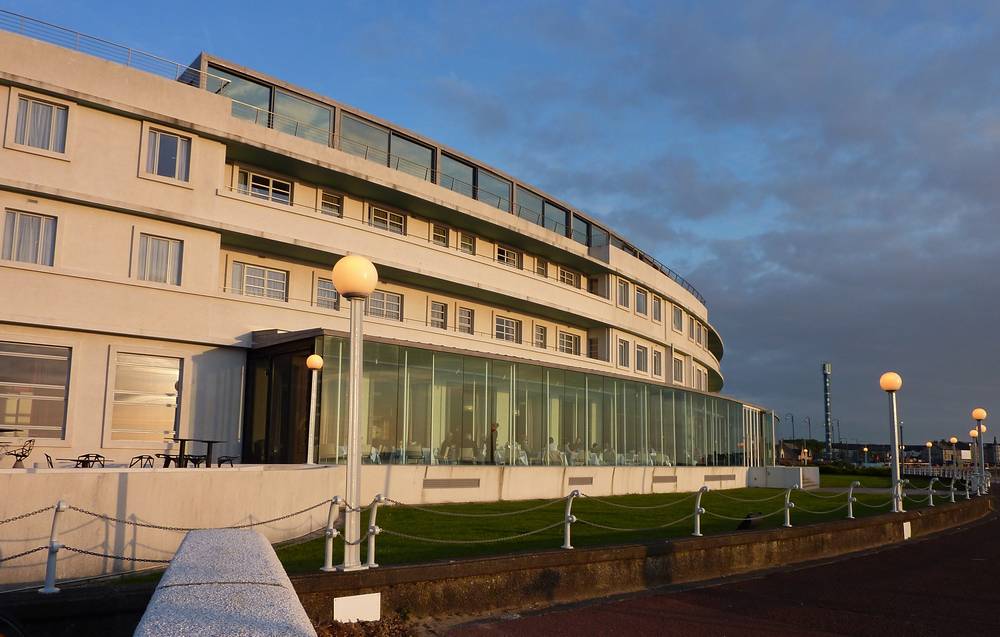
Midland Hotel Morecambe. 25th April 2011.
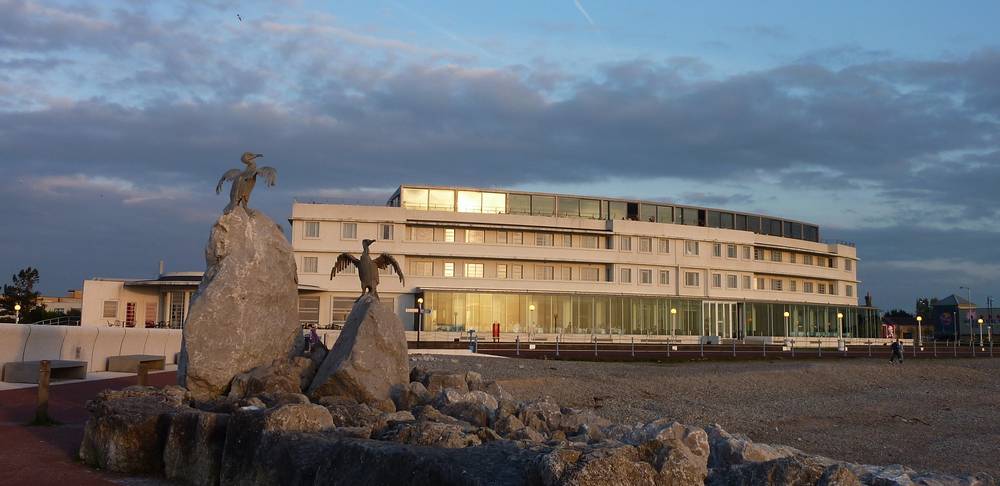
Midland Hotel Morecambe from the Stone Jetty. 25th April 2011.
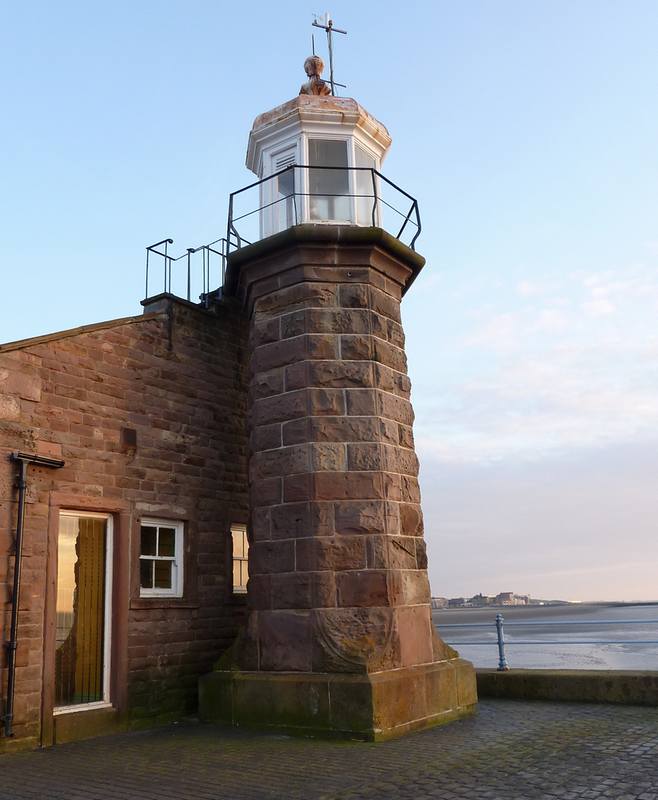
Lighthouse on the Stone Jetty. 25th April 2011.
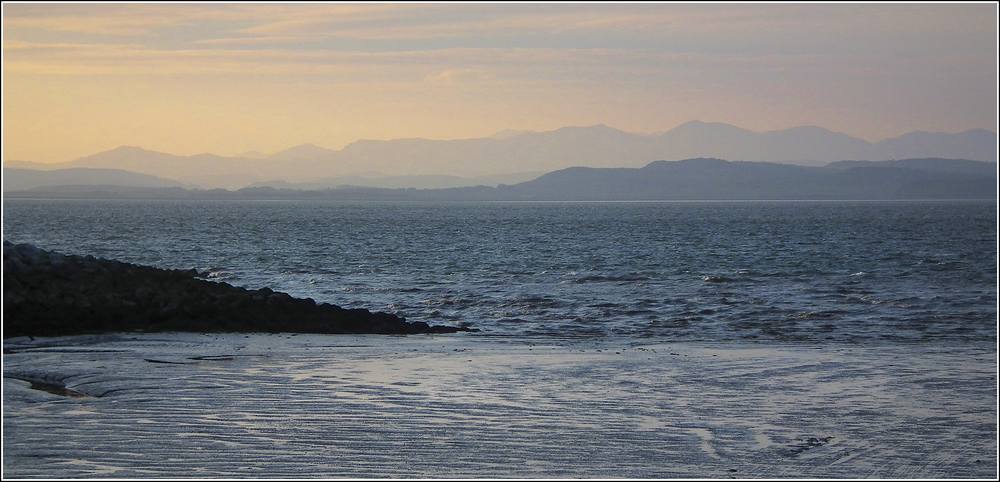
View across Morecambe Bay. 25th April 2011.
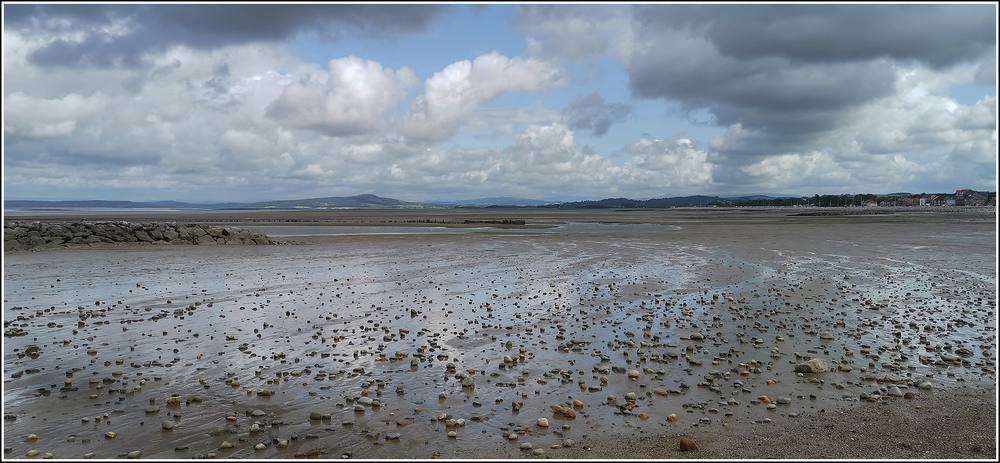
Low tide at Morecambe. 5th August 2019.
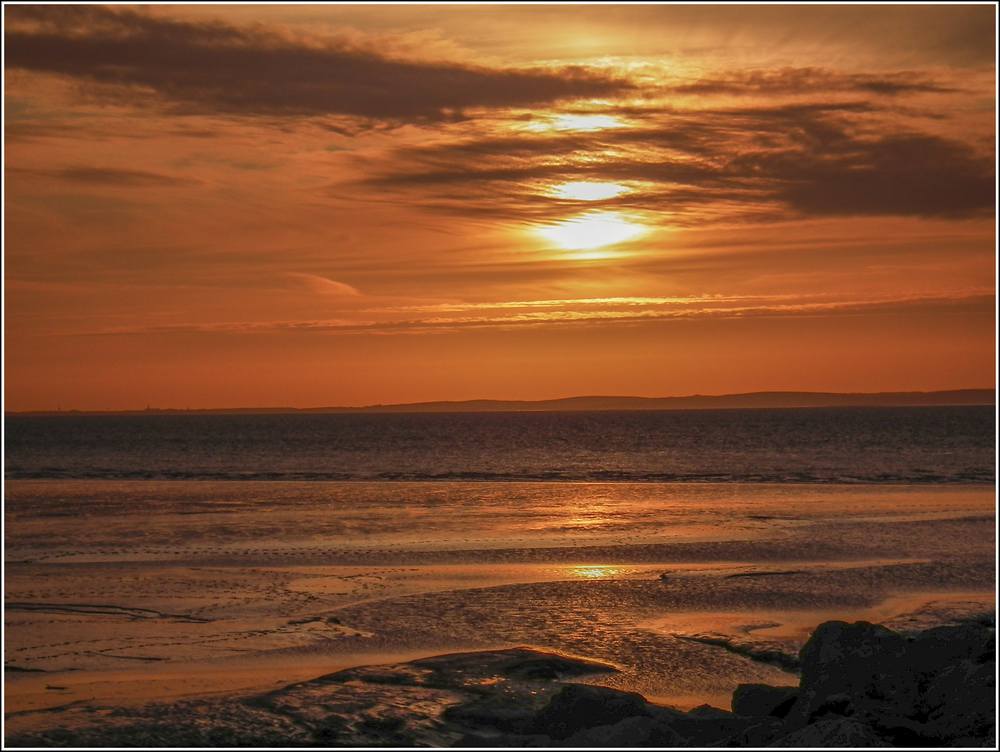
Sunset over the bay at Morecambe. 25th April 2011
The last three photos are by Rozsa Halls.
Grange-over-Sands
This town on the North side of Morecambe Bay, became a popular seaside resort in the Victorian era.
The River Kent used to flow past the town's mile-long promenade but its course migrated south, away from Grange. The sands or mudflats with dangerous quicksands became a grass meadow now grazed by small flocks of sheep.
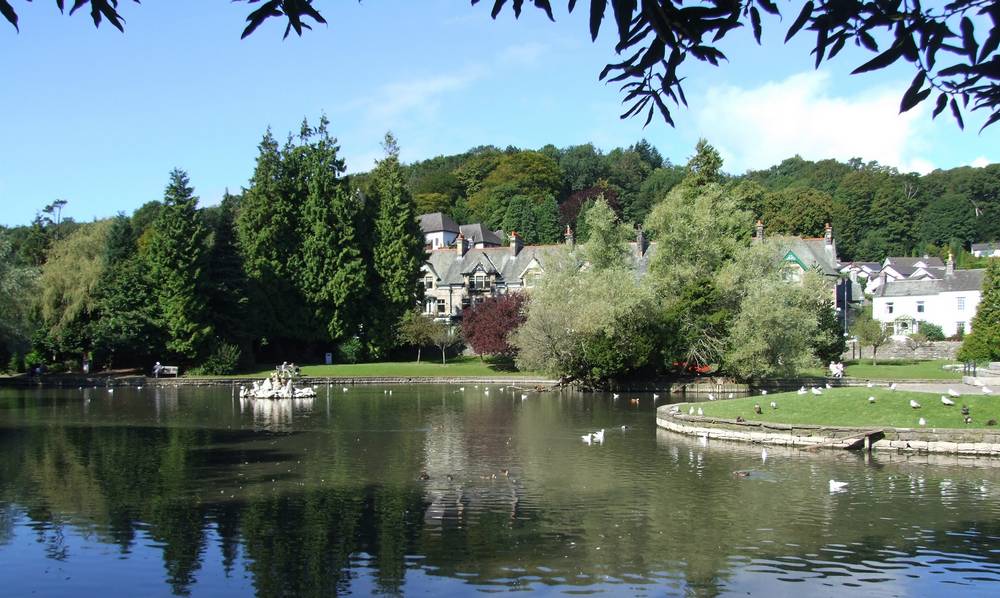
Ornamental Gardens and Duck Pond. 5th September 2007.
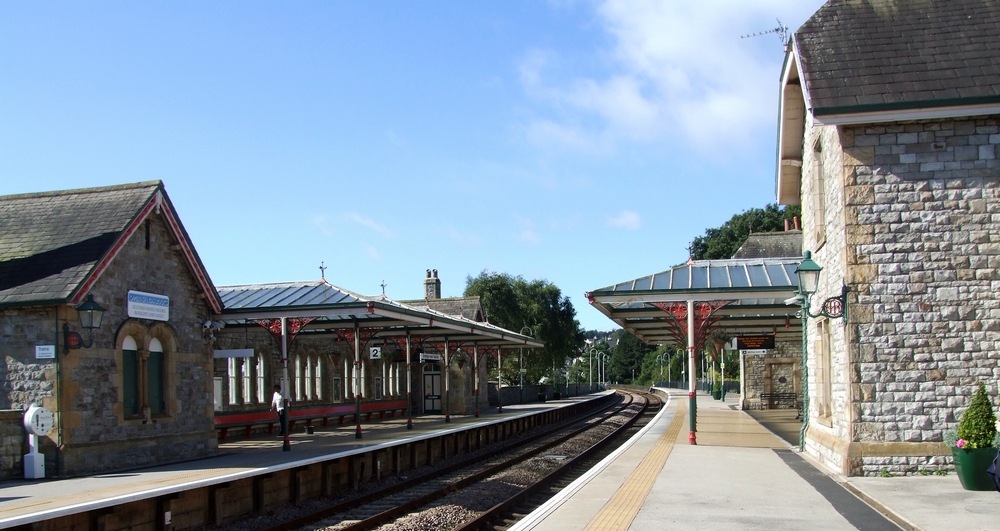
Grange-over-Sands Railway Station. 5th September 2007.
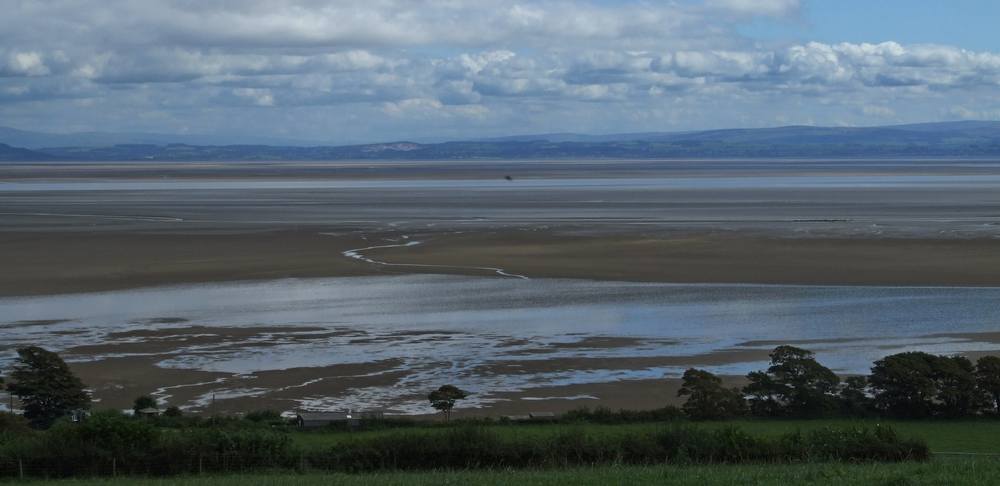
View over sands of Morecambe Bay from road between Grange-over-Sands and Barrow. 6th September 2007.
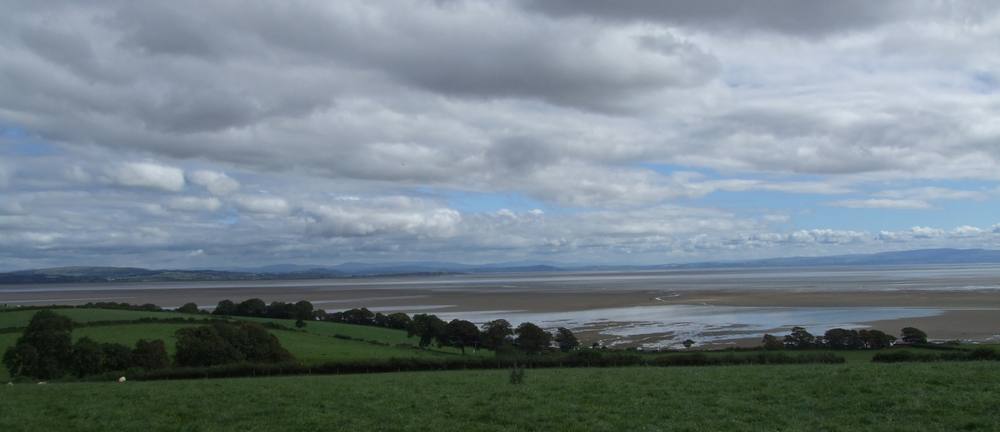
View over sands of Morecambe Bay from road between Grange-over-Sands and Barrow. 6th September 2007.
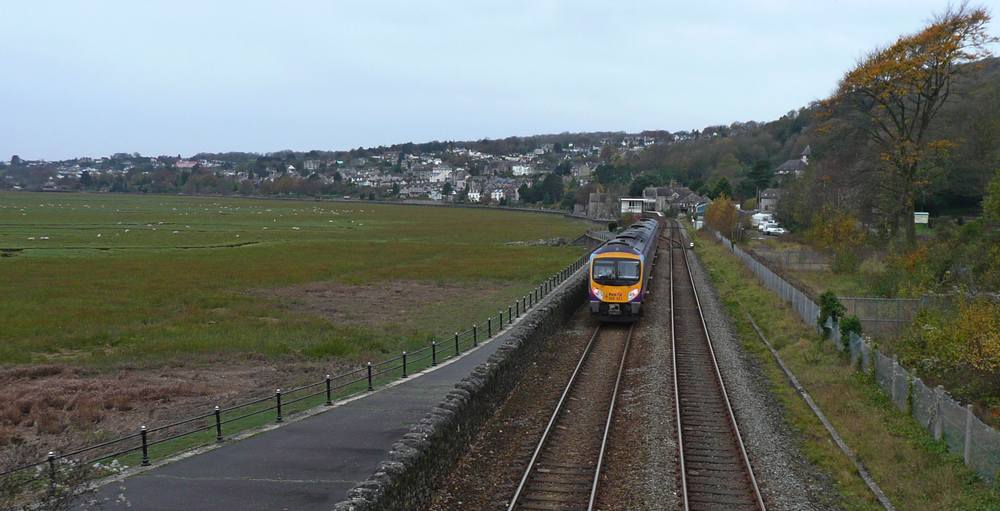
The railway line from Grange-over-Sands station with the promenade to its left and below that the sands now green and grazed by sheep. . 12th November 2009.
Cartmel and Lakeside
Cartmel, a picturesque village, is not far from Grange-over-Sands. It is famous for its ancient priory and for its Sticky Toffee Pudding.
Further North is Lakeside, a tourist destination for trips on Lake Windermere with a station for the Lakeside and Haverthwaite Railway.
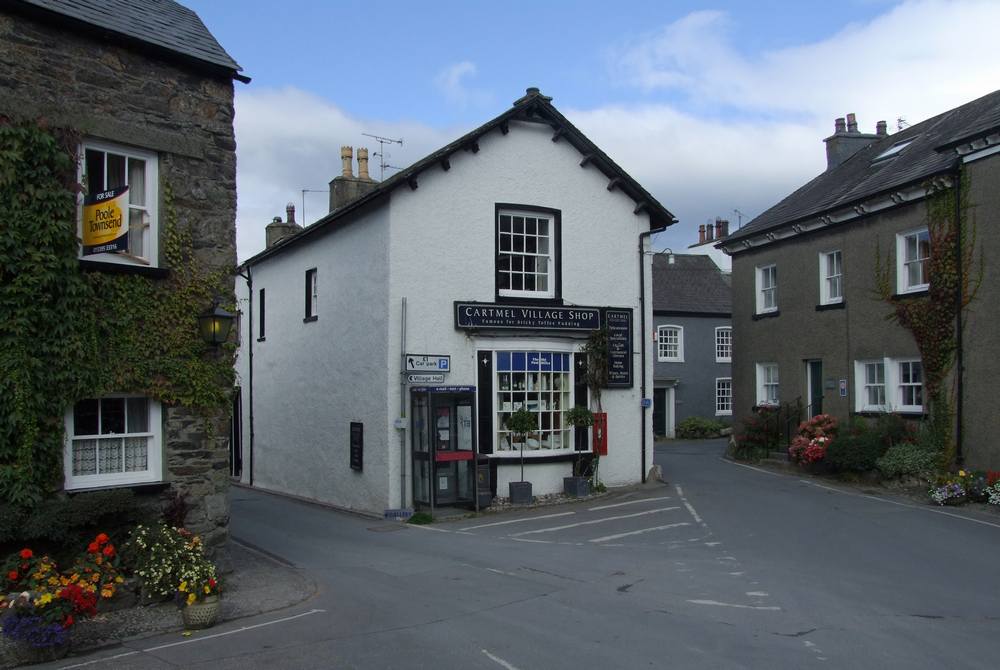
Cartmel Village Shop - the home of Sticky Toffee Pudding. 4th September 2007.
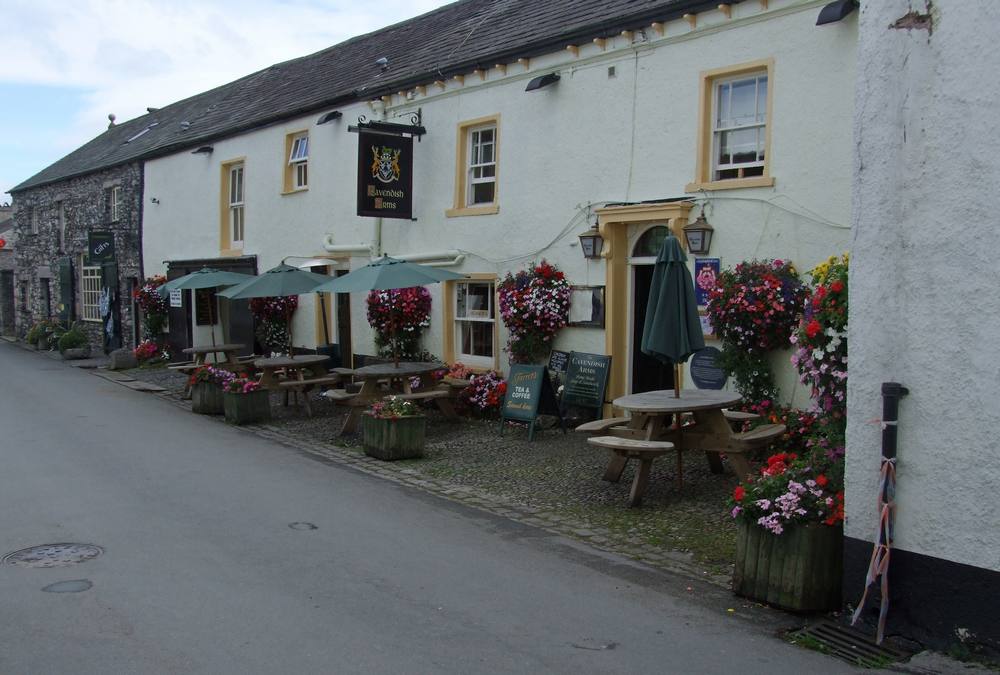
Cavendish Arms Hotel, Cartmel. 4th September 2007.
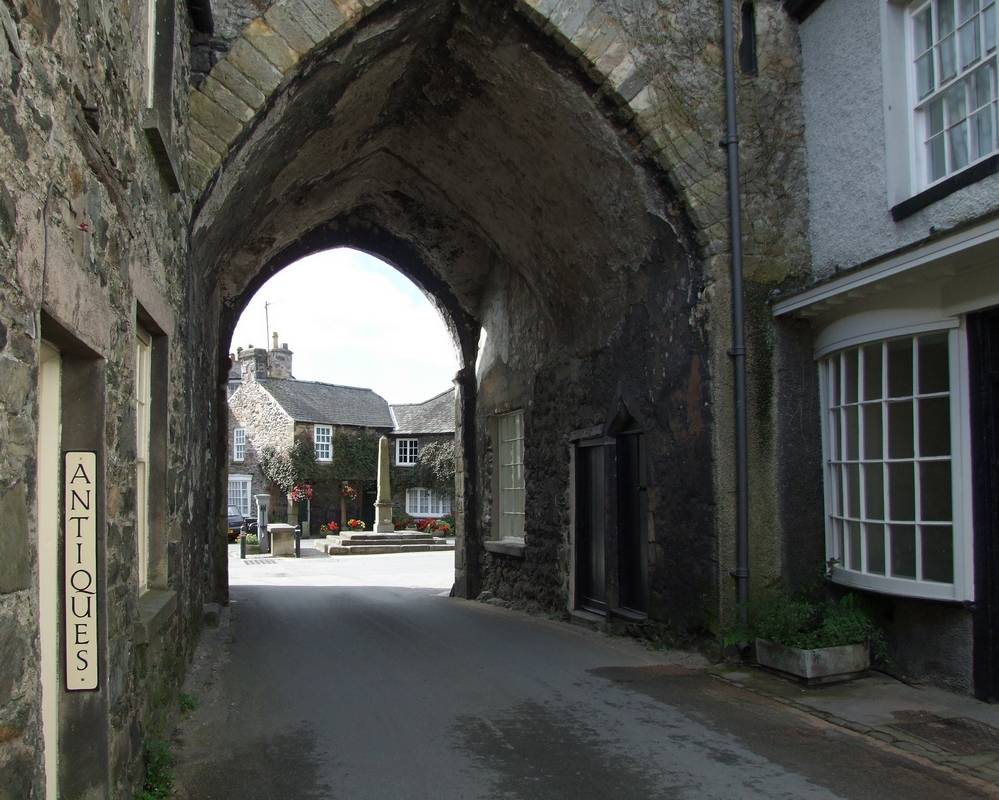
View from Cavendish Street through the Arch to The Square, Cartmel. 4th September 2007.
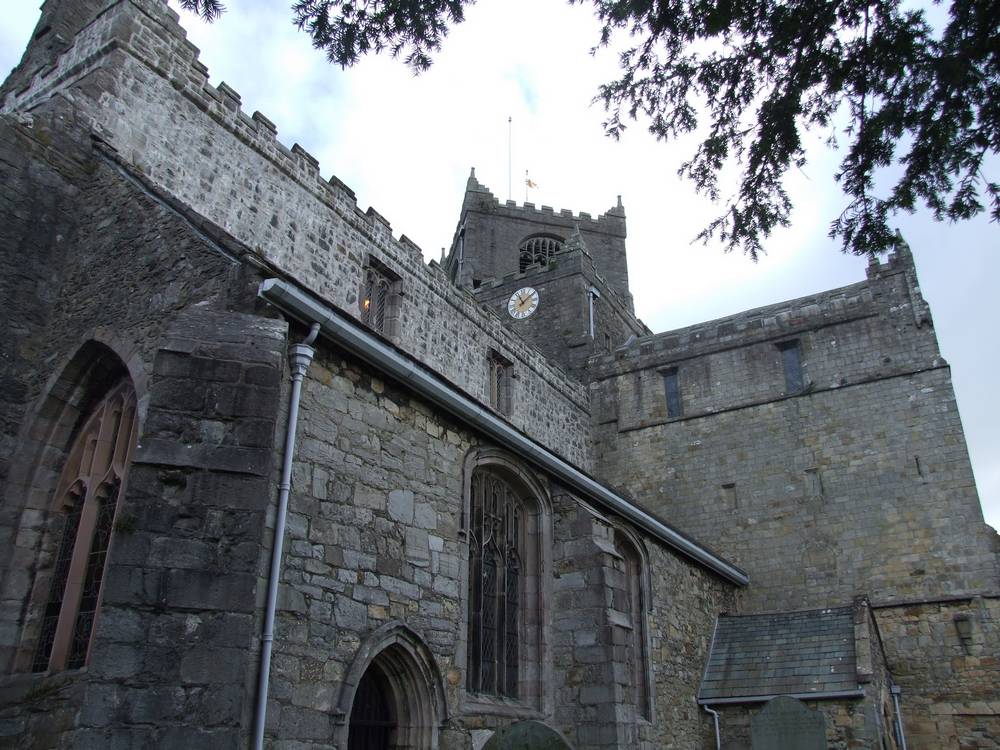
Cartmel Priory. 4th September 2007.
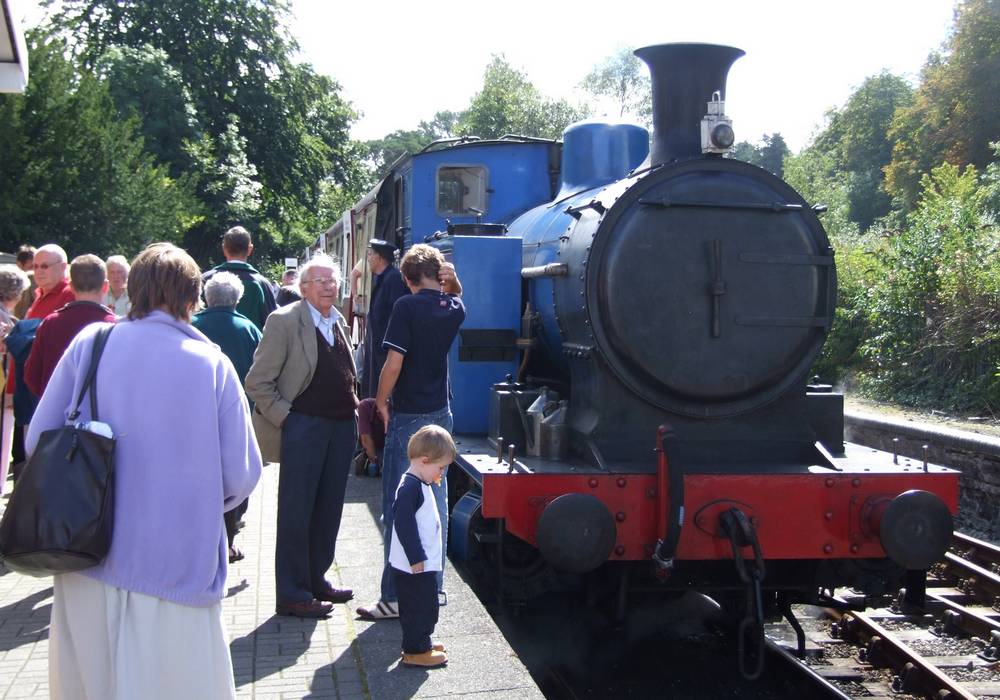
Lakeside Station, Lakeside and Haverthwaite Railway. 5th September 2007.
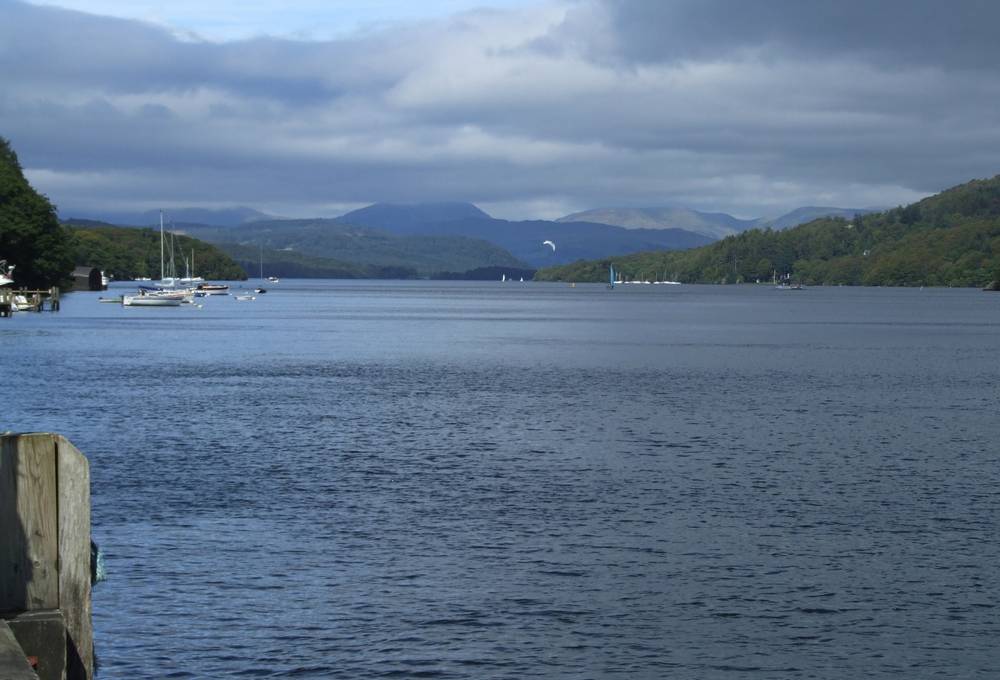
Lake Windermere from Lakeside Pier. 5th September 2007.
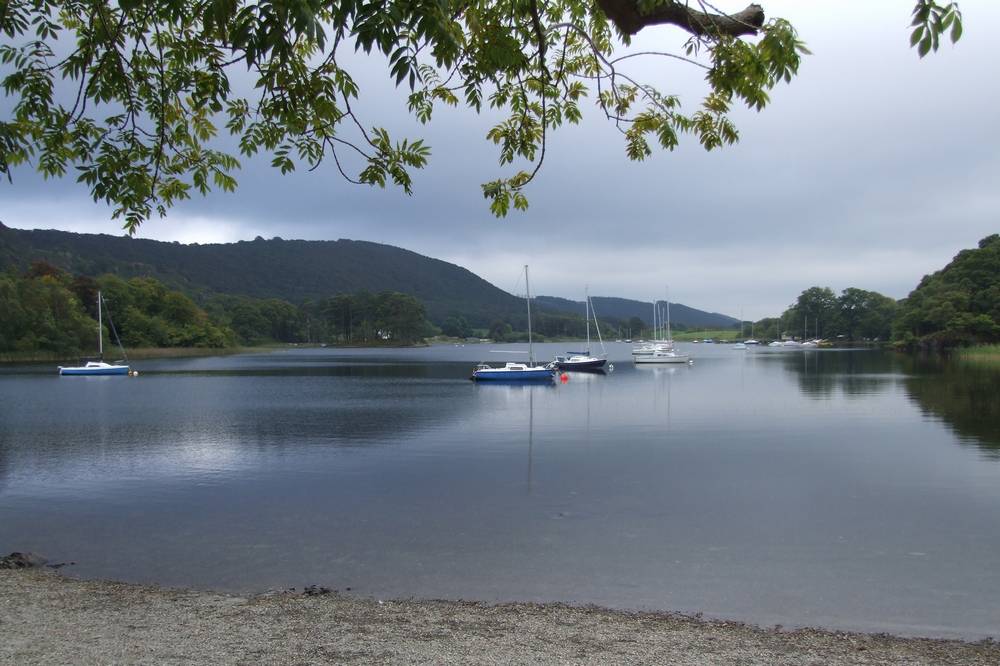
Lake Windermere. 5th September 2007.
Barrow-in-Furness
This town has a strong industrial heritage in steel production, heavy engineering and shipbuilding. The former Vickers site, now BAE Systems. is still involved in production of submarines.
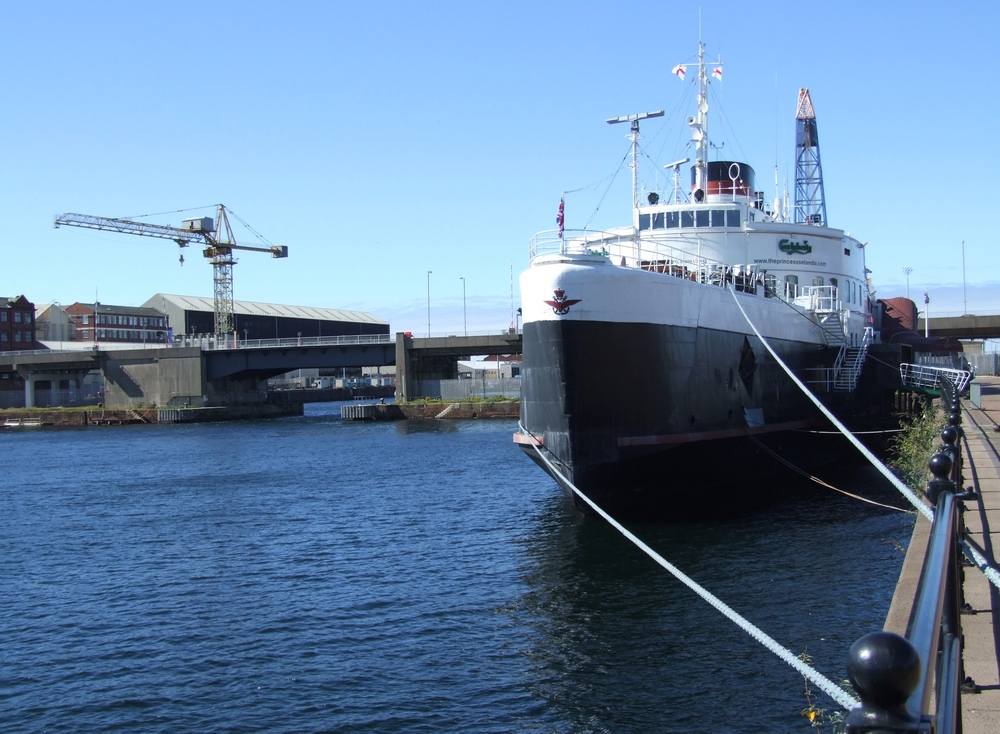
Buccleuch Dock, Barrow-in-Furness. 6th September 2007. The ship shown here, Princess Selandia, was a former Danish ferry. It served as a nightclub, restaurant and general venue until Aug 2010. In 2015, she left Barrow for Denmark to be scrapped.
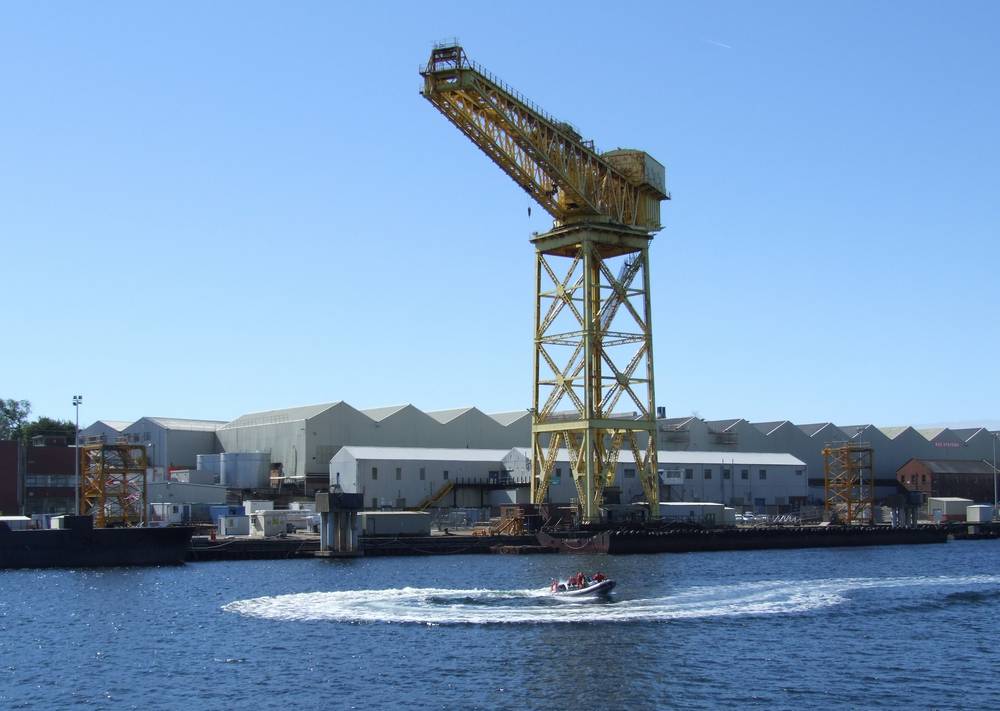
BAE Systems yard with large crane at Buccleuch Dock, Barrow-in-Furness. Sadly, since this photo was taken, this magnificent crane has been demolished. Photo: 6th September 2007.
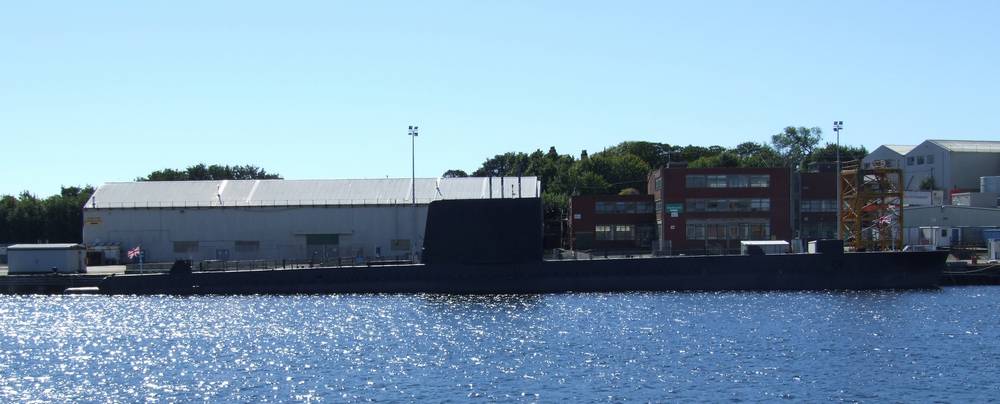
Submarine, Buccleuch Dock, Barrow-in-Furness. Photo: 6th September 2007.
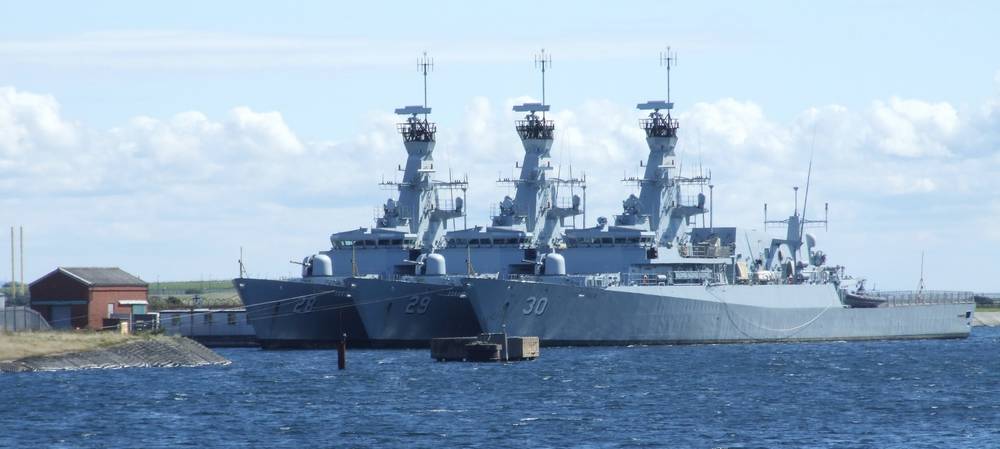
Three frigates built for the Royal Brunei Navy, Barrow-in-Furness. These became part of an international dispute and were stored here for some time. They finally left in 2013 to serve with the Indonesian Navy. Date of photo: 6th September 2007.
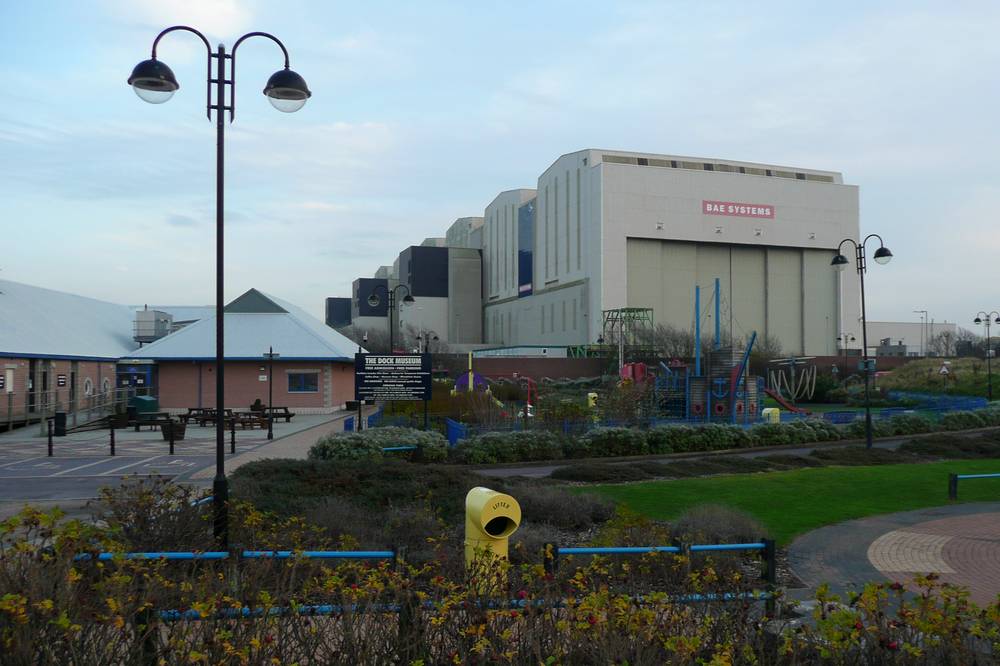
The Dock Museum and behind it the BAE Systems Devonshire Dock Hall indoor shipbuilding complex, the largest of its kind in Europe.. Photo: 11th November 2009.
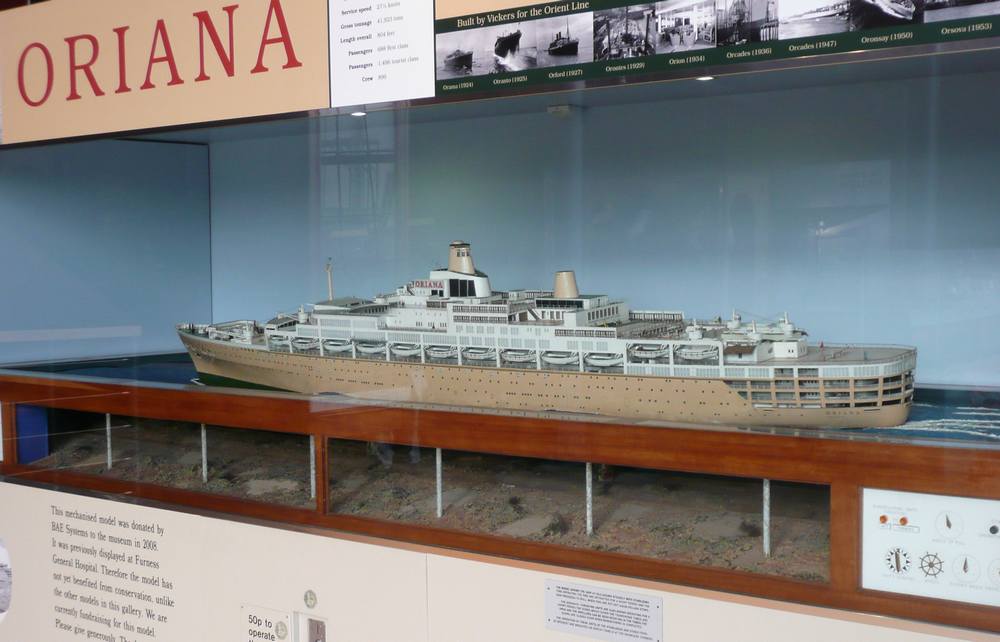
Model of SS Oriana in the Dock Museum, Barrow-in-Furness. Photo: 11th November 2009.
SS Oriana, built at Vickers, Barrow-on-Furness, was the last ship commissioned for the Orient Line. Her maiden voyage was in 1960 and she was the fastest liner on the UK to Australia. From 1973, it became solely a P & O Cruise Ship. in early 1986, the vessel was sold to become a floating hotel and tourist attraction, first in Japan and later in China.
Further Information
- Visit Lancashire - Crook O' Lune
- Wikipedia - Glasson Dock
- ikipedia - Morecambe
- Lakeside and Haverthwaite Railway
- Three Nakhoda Ragam Class are Set to Move to Indonesia. The three frigates shown above.
- The Dock Museum, Barrow-in-Furness
- SS Oriana
- The Furness Line This website - photos include Carnforth, Grange-over-Sands and Kents Bank ststions in 2007 and 2009